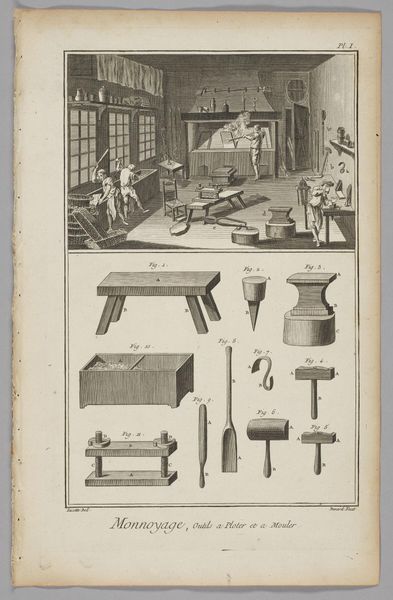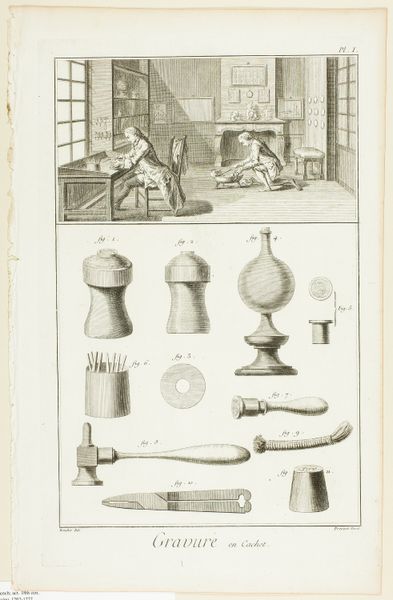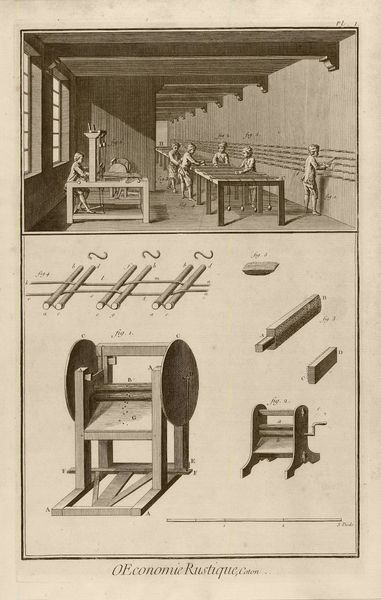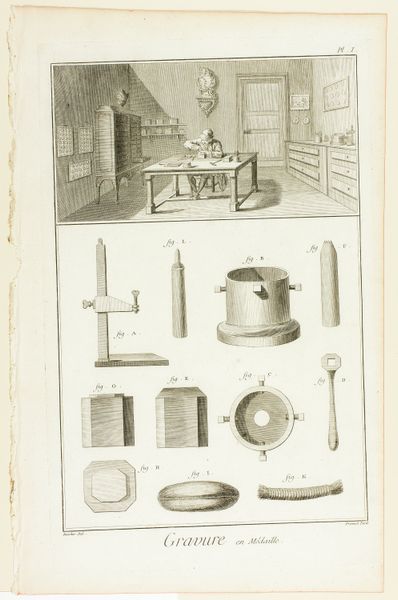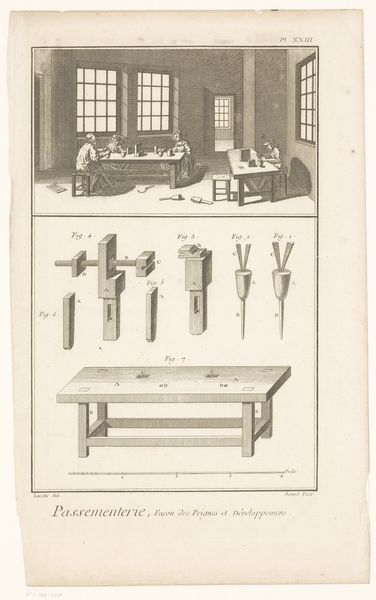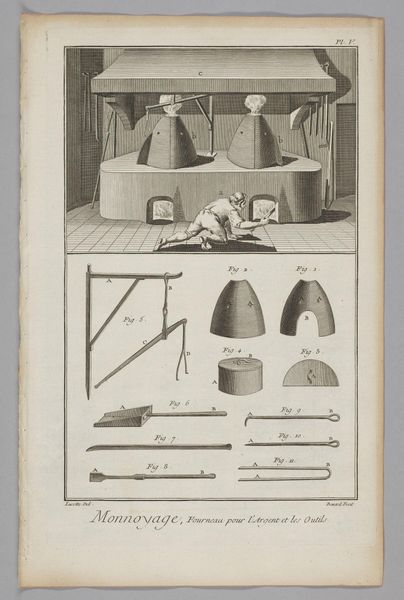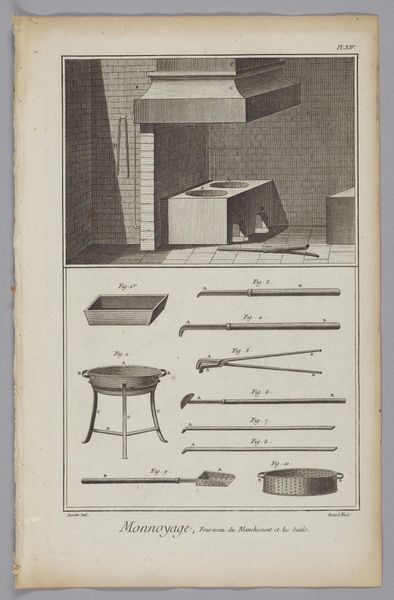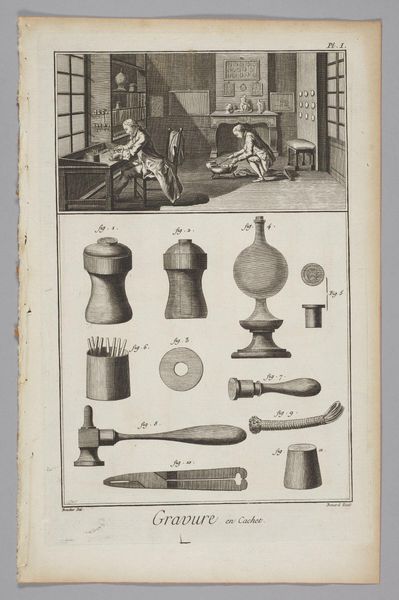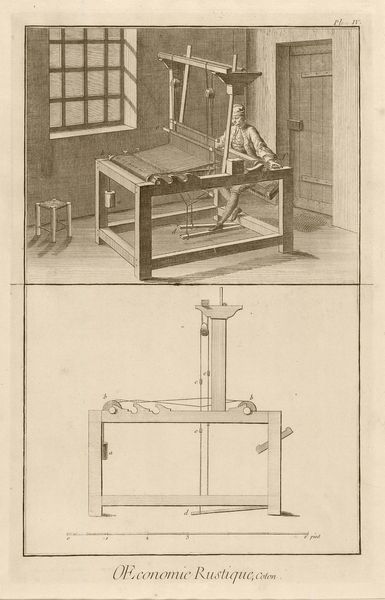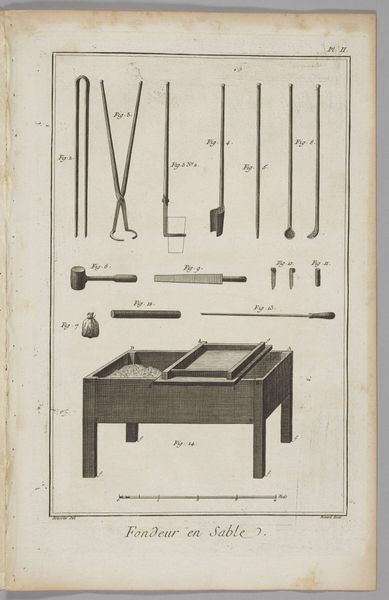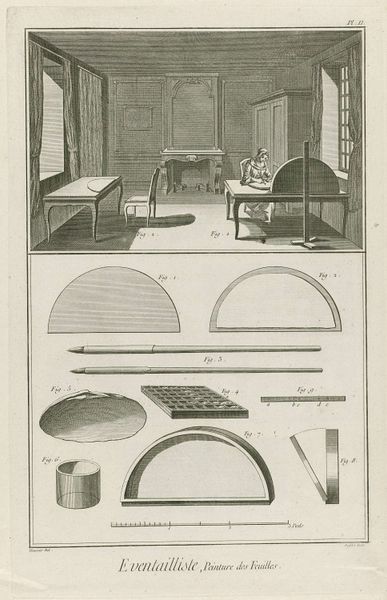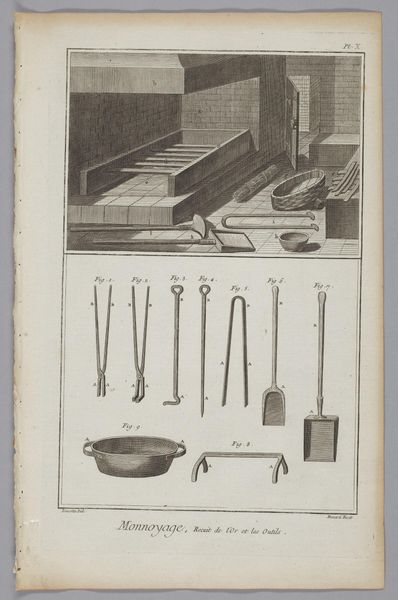
Encyclopédie, ou Dictionnaire raisonné des sciences, des arts et des métiers 1751 - 1765
0:00
0:00
graphic-art, print, engraving
#
graphic-art
#
baroque
# print
#
france
#
history-painting
#
engraving
Dimensions: 17 volumes ; H: 15 3/4 in. (40 cm)
Copyright: Public Domain
Curator: Take a look at this print from Diderot's Encyclopédie, a colossal project published in France between 1751 and 1765. This particular plate details the craft of bookbinding. Editor: Immediately, it feels like a peek into a bygone world, almost clinically observed with all these implements laid bare, yet the scene possesses such a gentle quietude... The air seems thick with paper dust and the scent of glue. Curator: Absolutely. Diderot intended this Encyclopédie to catalogue and celebrate human ingenuity. Here, it's the labor involved in book production that’s under examination, literally piece by piece, stage by stage. Each tool and technique illustrated, breaking down this intricate process of cultural transmission. Editor: Yes! And this is pre-industrial revolution! One can really imagine the time, the effort. It underlines the physicality of knowledge. It’s a reminder that even ideas must take on material form, moving through these hands. Think of the wood, the linen, the glue, each with a backstory. It emphasizes our engagement with matter. How heavy those volumes being assembled must feel, how precious, too. Curator: I agree, there's such intimacy depicted. Look at the figures almost frozen in action; notice how deliberately they render the environment – from light filtering through windows to meticulously arranged shelves, and these scattered tools on the floor. All pointing to the idea that these hands crafted something durable that would potentially last for generations. I think this particular image also tells an important story about class divisions and collaboration and access. Who owns these books, and who labors to create them? Editor: Exactly, and one should ask, “Who’s labor *isn’t* represented here?” Are these all men? Were children involved? It begs for the recovery of that silenced historical record, doesn't it? Also, thinking materially again, just how durable is it, given paper’s vulnerability and inevitable degradation. Curator: I love how a single print ignites such expansive ideas. These kinds of encyclopedias are truly remarkable time capsules, isn't it? Editor: Definitely, it's a compelling picture and certainly makes me want to dive deeper into the tangible process of creating one.
Comments
No comments
Be the first to comment and join the conversation on the ultimate creative platform.
